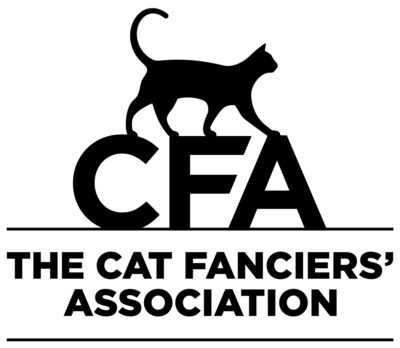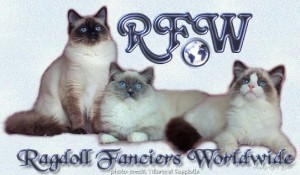Please feel free to send ANY inquiries to [email protected] OR call/text me at 386-795-0778
Check out https://sunnyshorescattery.com/available-kittens/ to see what’s currently available.
Rachel Zimmer – SunnyShores Cattery, Daytona Beach, FL
Is it true that there are online kitten sales scams?
Yes, unfortunately, it is. Especially with a popular breed like the Ragdoll, crooks are just looking for easy ways to make a buck. It happens with online puppy sales as well.
Please do not be fooled by kitten scams! Check out my Buyer Beware page
What are HCM and PKD?
Cats affected by hypertrophic cardiomyopathy (HCM) are at risk of sudden cardiac death. In Ragdoll cats, a breed-specific mutation has been found to be associated with increased risk for HCM.
Feline polycystic kidney disease (PKD1) is a heritable form of polycystic kidney disease commonly seen in Persians and cats with Persian ancestry. Affected cats develop cysts on their kidneys, which often leads to renal failure at a later stage.
SunnyShores is proud to be a Genetically Tested cattery. As a reputable breeder, I testify that every cat/kitten has been produced from parents/bloodlines negative for the known DNA HCM and PKD mutation found in the Ragdoll breed, as well as over 50 other additional genetic diseases.
Why is a health guarantee so important?
We all want a pet to live a long, happy life and choosing a breeder that stands behind the kittens they produce is one way to ensure that. As a breeder working with Ragdolls for over 20 years, it’s easy for me to provide a 5 year genetic health guarantee. I know my cats and their bloodlines and stand behind them 100%!
Why is it important to get a kitten from a breeder that participates in TICA or CFA or LCWW etc shows?
You’ll see so many breeders out there making such statements as “from champion lines”, “from international champion lines”, “champion pedigree”, “supreme grand champion bloodlines”. Statements such as these mean a breeder doesn’t actually show the cats they are breeding, but have bought a cat(s) with a “champion” somewhere in the pedigree. This could be as far back as 10-12 generations. A lot can be lost even in just 2-3 generations. The key to a successful breeding program is to produce sound cats, not only in structure, but in temperament as well. Showing breeding cats gives us insight to both. Are they structurally sound to carry on the next generation? Do they have that true Ragdoll personality to pass onto their offspring? It is important as a breeder that you never stop learning, and NEVER stop trying to improve.
But don’t you win money or prizes at a cat show?
Oh, how often I get asked this question! The answer is NEVER!! We are not compensated in anyway to enter or win at a show. In fact, it is quite the opposite. High entry fees, motel stays, gas, and food make a cat show weekend quite an expensive one. I do it for the love of the breed, to make sure my cats are what a Ragdoll is meant to be, and I love all my cat friends.
Should I get a male or a female?
Most people are under the misconception that males “spray”. While this is true of a male cat that has not been neutered, it is not true of a kitten that has been neutered before puberty. Did you know that females that have not been spayed will “spray” as well? Spraying is a way to attract a mate for either gender. So, when we talk about a kitten that will come to you spayed or neutered and not have those hormones that make them spray, then it all comes down to personal preference. Males will get bigger than females as a general rule, but other than that, there’s not much difference between the genders.
Isn’t it risky to spay or neuter a kitten before it’s 6 months of age? Won’t they have health problems from this procedure being done at an early age?
A common fallacy is that kittens should not be spayed or neutered until 6 months of age. Who came up with this number? There is certainly no scientific evidence that says 6 months is a better age than 3 or 4 months. In fact, there have been many studies to the benefits of early alter.
All pet and show alter kittens will be spayed or neutered prior to placement in their new homes with no exceptions.
An excerpt from the EveryCat Health Foundation;
In the early 1990s, Mark Bloomberg, DVM, MS, DACVS, and W. Preston Stubbs, DVM, DACVS, at the University of Florida, conducted the first health and behavior studies on kittens altered at seven weeks of age and compared them to kittens altered at seven months of age. Their work proved that earlier spay/neuter was safe and feasible, and formed the basis for further research that established the best anesthetic and surgical protocols for early-age altering. Since these first studies were published, other short- term and long-term studies have validated the safety of early-age altering.
Why can’t my kitten come home at 8 weeks?
Kittens are adorable and curious creatures, but there are important reasons why it’s best to wait until they’re a bit older before bringing them home:
- Socialization Period: Kittens have a critical socialization period from 2 to 9+ weeks of age. During this time, their brains are open to new experiences, and they tend to view them as interesting rather than frightening. Socializing kittens during this window helps them adapt to living in human homes and become confident and friendly members of the family.
- Stress and Adjustment: Moving to a new home is stressful for any cat, especially young kittens. They need time to get used to the smells, sounds, and layout of their new environment. A kitten that is too young may lack the confidence to properly adjust to its new home.
- Health and Development: Young kittens have smaller reserves, and any disruption in their eating or drinking can lead to dehydration. Waiting until they’re a bit older ensures they’re better equipped to handle the transition. Additionally, kittens need to learn essential skills from their mother and siblings, such as food sourcing and social behaviors, which takes time.
Remember, patience pays off! When you finally bring your kitten home, they’ll be better adjusted, healthier, and ready to explore their new world. 🐾
What kind of food do you feed?
My cats and kittens eat a mix of Purina ONE chicken dry, Iams kitten dry, a variety of Friskies and Royal Canin canned foods, Fresh is Best freeze dried raw cat food, Fresh is Best freeze dried raw treats, and Temptations treats.
Water bowl vs water fountain?
Cats don’t drink enough water, but with a fountain they are enticed to drink more. I believe the fresh, flowing nature of a fountain is perfect for our kitties.
What kind of litter do you use?
I love Dr Elsey’s brand. It clumps well, has low dust, and keeps odor under control. I use the Classic in my house, but I would recommend any of the others as well.
Should I bathe my Ragdoll regularly?
It isn’t necessary to bathe a Ragdoll “all the time”. Too frequent bathing will strip the natural oils of the coat causing your cat to create dandruff and have a dry haircoat. If you want to bathe, do it no more than once every 3-4 months with a non detergent shampoo designed for animals. If you never want to give your cat a bath, well, that’s ok too!
Does a Ragdoll shed a lot or require a lot of grooming?
All animals shed, even us humans shed hair, but the Ragdoll is a very low maintenance long haired cat breed. They only have a single layered coat, unlike some other breeds. This is one of the reasons that they are so easy to care for, no wooly undercoat that mats or requires a lot of brushing.
I’ve read Ragdolls are hypo-allergenic because of their unique coat, is this true?
No. A common misconception is that people are allergic to cat hair when in reality it’s a protein in cat saliva that causes human allergies to cats. Dander is dried saliva left behind from a cat’s mouth after grooming and whether they have long coat of hair or are completely naked like a Sphynx cat, there is going to be allergy causing dander left behind. But not to worry! If you have cat allergies and truly want a feline companion (or maybe a family member does) the Siberian cat lacks the protein in its saliva that causes allergies. It is the only known hypo-allergenic breed. Some informational reading if you’re interested, What is in a Cat’s Saliva?
Would you like to link to us? Please feel free to pick up our linking banner and link it to www.sunnyshorescattery.com Thank you!




![button_small[1]](https://sunnyshorescattery.com/wp-content/uploads/2015/05/button_small1.jpg)




